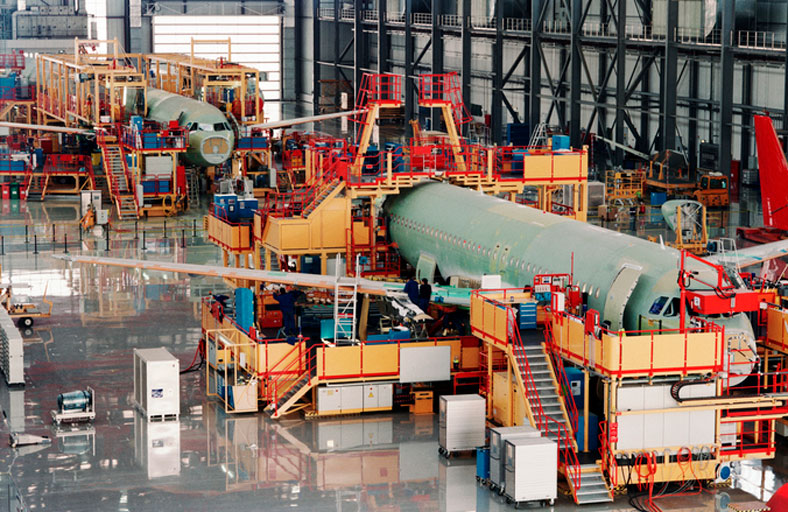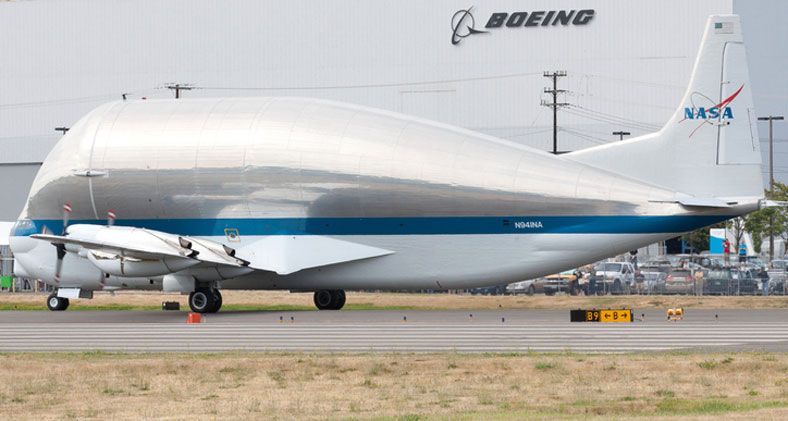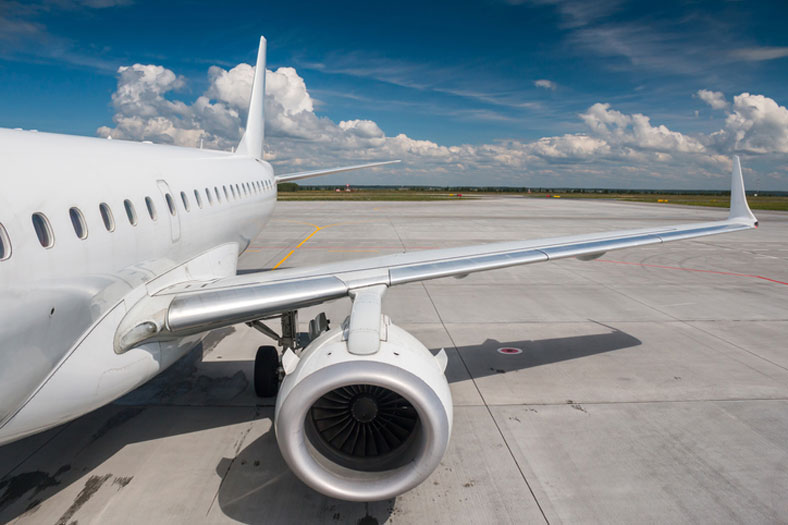Written by Scott Wilson

If you’re looking for a career in a supply chain management industry specialization that’s pushing to new heights with every passing year, then aerospace is the right choice for you. In fact, with increasing demands that eventually lead to the capabilities to meet them, today, the sky is no longer a limit at all.
But getting big hardware off the ground is a business that comes with a lot of challenges and limitations.
Aerospace engineering is a world of tight tolerances and high safety margins. Procurement teams track the provenance of every component. Quality inspectors double and triple-check parts. From hard-won experience, they know the kind of tragedy that can strike the moment they lose focus.
There’s also enormous complexity in modern flight vehicles. A 787 is built out of more than 2.3 million primary parts, coming from suppliers in seven different countries. Bringing those together in the right order, in the right shape, at the right times is a massive challenge for logistics teams working at 45 different contractors.
Exotic materials and computer chips forged overseas are critical components in today’s jets and spacecraft.
It’s an industry that can only exist on the back of the enormous effort and skill of those logistics teams. They are led by supply chain management professionals with the best education American colleges can provide. And it’s an industry that will need more of them in the immediate future.
The American Aerospace Industry Is Booming… but It Relies on Components from Around the World

With a history stretching back to Orville and Wilbur Wright, aerospace has been and remains a predominantly American industry. Four out of five of the top aerospace companies ranked by revenue are American. Yet as a supplier to the world’s airlines, it’s a global business, with tendrils reaching every continent.
According to the Department of Commerce, the aerospace industry produces exports that support more jobs than any other American-made commodity.
The United States also remains on the bleeding edge of groundbreaking new aerospace ventures. SpaceX has wrapped the globe in satellites that can beam high-speed internet to the most remote regions. And new startups like Astra and Hermeus are pioneering even more exotic tech like electrical propulsion systems for spacecraft engines and hypersonic aircraft designs.
If it’s not a renaissance in aviation and space exploration, it’s definitely a resurgence. Post-COVID, air travel is back en vogue. Private investment in launch systems has ramped up space shots. Drones have opened up new possibilities in low-altitude aerospace.
It’s a bright field, for anyone with the skill and training to jump into it.
Jobs in Aerospace Supply Chain Management Come with Sky-High Demands

The jobs that make aerospace supply chains tick cover all the usual specializations:
- Supply Chain Analysts and Planning Specialists
- Procurement and Contract Managers
- Material and Storage Managers
And there are many positions that are simply called Supply Chain Manager that may take on some or all those tasks.
But don’t let the titles fool you. These are some of the most demanding positions in logistics. Billions of dollars and millions of lives are in the hands of the people getting the right parts for aircraft into the right hands.
The Longest Supply Chain in the Solar System
 There’s one aerospace supply chain longer and more fraught than any other… the one that leads to the International Space Station.
There’s one aerospace supply chain longer and more fraught than any other… the one that leads to the International Space Station.
Once folks started living in space for long periods, resupply became a necessity. Astronauts can’t pop out to the corner store for groceries – even oxygen and water have to be shipped in. And home repairs often require taking a spacewalk, not a trip to Home Depot.
Keeping these vital materials available, cataloged, stored, and safely shipped atop a 9G pillar of exploding fire is the business of Commercial Resupply Services.
These privately operated supply rocket launches deliver 8,000 pounds of cargo. In the same way earthly freight is packed into standardized TEU (Twenty-Foot Equivalent Unit) containers, it all gets standardized into 60-pound Cargo Transfer Bag Equivalents (CTBE). Unlike TEUs, which are shifted by cranes and professional yard workers, CTBEs force astronauts to become dock workers with every capsule arrival.
It’s a carefully choreographed process that nonetheless comes with enormous risks. In one 8-month period in 2014 and 2015, three completely separate resupply missions failed sequentially.
Of course, resupplying ISS will look like child’s play once astronauts are on the Moon again, or, eventually, Mars. But you can be sure that supply chain managers who cut their teeth on orbital shipping will stand ready to keep vital materials moving across the void.
Given the level of importance that supply chains have within the industry, there are also many executive positions available. An Associate Director for Supply Chain, Global Supply Chain Director, or Senior Manager of Supply Chain Management all take on leadership and strategy roles that blend business with logistics management.
There are plenty of sub-sectors within aerospace that each have their own unique supply chain demands and staff:
- Airlines - Parts and maintenance mean an emphasis on procurement and inventory are strong in airlines of all sizes.
- Aircraft manufacturers - With long, worldwide supply chains fueling every airframe that comes off the line, global logistics is the focus. Contract management is also important as complex supply and delivery agreements are met.
- Satellite and launch services - Precision, attention to detail, and meeting key launch windows make a focus on operations paramount here.
Dozens of sub-fields that feed into those services all come with their own unique positions and considerations.
Fly High on Aerospace Supply Chain Management Salaries

The Bureau of Labor Statistics (BLS) tracks two basic categories of logistics professionals for salary and employment data.
The first are Logisticians, the analysts, schedulers, buyers, and coordinators who are doing the bulk of the hands-on work of logistics systems. For 2022, BLS pegged the median salary for these jobs in the aerospace product and parts manufacturing industry at $92,290 per year.
The second is Transportation, Storage, and Distribution Managers. These are the supervisory and planning positions that set logisticians in motion. Their average salary for 2022 was $139,600 per year.
Finally, there are the most senior jobs in the industry, those of directors, vice presidents, and chief logistics officers. BLS drops these jobs in with other Top Executives, who collectively enjoy average salaries of $188,110 per year.
There are positions in aerospace SCM that exist outside of the manufacturing industry, of course, but they don’t line up neatly with other BLS categories. It’s best to consult our overall guide to supply chain management salaries for a big picture view.
The Best Degree to Earn for a Career in Aerospace Supply Chain Management

One thing that is fairly consistent across aerospace supply chain management jobs is a high standard for educational attainment. Aerospace is a high-tech business. Even the work of shuffling boxes around a storage room in the back of a hangar can have implications that higher education can help you understand.
So, plan on earning at least a two-year Associate of Applied Science in Supply Chain Management and Logistics to get started at even the lowest levels in aerospace logistics. Four-year Bachelor of Science in Supply Chain Management can land you on the lower rungs of management positions, while graduate programs such as a Master of Science in Supply Chain Management are a common goal for senior executives.
In particular, Master of Business Administration in Global Supply Chain Management or similar programs offer a useful level of preparation for overseeing the complex connections of modern aerospace supply chains. Online options allow you to pursue these degrees even while you maintain your existing personal and professional responsibilities.
You’ll also find that some schools offer specialized SCM degrees focused on aeronautics. A Bachelor of Science in Aviation Business Administration in Supply Chain Management in Aviation and Aerospace or a Master of Science in Aerospace Administration and Logistics go right to the heart of the challenges.
On top of the general studies of project management, procurement, transport systems, and storage that come with every SCM program, these degrees lean into specific considerations in aerospace logistics, including:
- Airport Operations
- Aerospace Hazard Control and Analysis
- Aviation Safety Program Development
- Accident Investigations
Plus, you are guaranteed to have internships opportunities or other experiential learning directly within the aerospace sector. That provides valuable, on-the-ground expertise that you can take with you to your own career.
If a full degree isn’t exactly what you need, or if you already hold a degree in engineering or some other related field, then a certificate program in SCM may be more your speed. Quick and inexpensive, these college-level programs can dive into very specific aspects of aviation supply chain management, or cover everything at a high level. For executives, something like a Leading Aerospace Supply Chains Certificate or Managing Aerospace Supply Chain Certificate builds specific expertise.
Professional Certifications Play a Role in Aerospace Logistics Careers
Certification is an important process in the aviation world, so chances are you’re already familiar with it. Pilots, mechanics, air traffic controllers… all of them have to earn certs to prove they have the skills for the job.
In a similar way, certifications exist in the supply chain world that validate your skills and abilities in certain areas. Although not mandated in the way they are for other professions, certs offer the same signal to employers and colleagues that you know your stuff.
Certifications are available both for general supply chain management expertise and in specific areas like procurement or risk management.
While any of these can be useful in aviation and space SCM, the industry is particularly demanding when it comes to quality management. That means certification in Lean Six Sigma is a big boost to careers in operations and production.
Aerospace supply chain management isn’t for anyone who isn’t willing to give it their best every day. A lot of lives and a lot of money are on the line, not to mention the future. It’s an exciting field that will take everything you have to give to the job. But it’s also one that leaves you with a warm glow and sense of accomplishment every time another bird lifts off.
2022 US Bureau of Labor Statistics salary and employment figures for Aerospace Product and Parts Manufacturing reflect national data, not school-specific information. Conditions in your area may vary. Data accessed September 2023.







